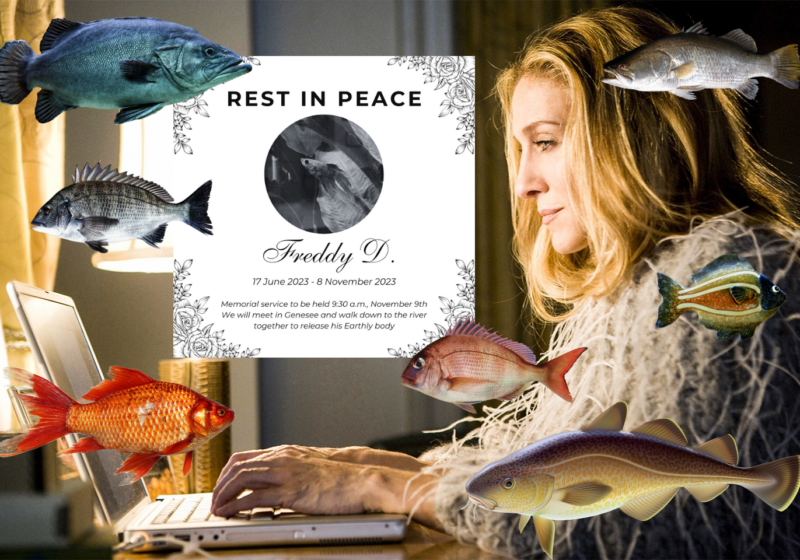To call the University’s International Theatre Program’s adaptation of “Oedipus” immersive is an understatement; captivating, meticulous, and inviting only begin to describe the allure of director Jo Cattel’s powerful adaptation.
Cattel perfectly adapts “Oedipus Rex” to preserve the thematic intentions of Sophocles’ 5th century BCE work while allowing modern audiences to fully understand and connect with the text. As audience members are invited into Thebes, they witness a plague-stricken community stemming from political pollution. Viewers learn that this poison can only be resolved by finding the murderer of Laius, the most recent King of Thebes. As the newly-inaugurated members of Thebes investigate this murder-mystery, they question the true power of free will over fate, and explore themes of guilt, ignorance, and responsibility.
Arguably the most compelling aspect of UR’s adaptation is the interactiveness that ensures that each spectator follows a unique journey with experiences and learnings that reflect their own personal curiosities. By encouraging audience members to follow characters as they diverge into three separate rooms, the director allows them to hear private reflections of each character. This choose-your-own-adventure structure provides the same line of events through different voices, creatively mimicking the simultaneity of plotlines and perspectives that simply would not be possible in a regular play.
A great advantage of these monologues and asides is their ability to depict each stage of the tragic hero of protagonist Oedipus, who is wonderfully depicted by Anna Bakina ‘25. Taking on a character who undergoes such significant development is no easy feat, and it is extraordinary how powerfully Bakina embodies Oedipus’ downfall. Her profound understanding of her character is especially evident by the immense pity the audience senses during the major cathartic moment of the play.
The deep bond viewers eventually form with the play’s protagonist is greatly by virtue of the play’s production staff. Scenic and lighting designer Seth Reiser effectively uses diverse lighting sets to add ambience and warmth to some scenes, fostering the audience’s sense of membership in the Theban community, and dramatization in others, adding suspense, fear, and intrigue. These techniques are supplemented by the production’s audiovisual engineers and light and sound crews, who work together to create a cohesive and remarkably immersive environment.
Reiser’s attention to detail in the play’s set design is especially worth noting; each prop in each room reinforces the bridging of Sophocles’ ancient tragedy to the Theatre Program’s adapted version. This meticulousness is perfectly illustrated in a transition area between settings — with the walls colourfully decorated with graffiti and filled with Theban perspectives of Oedipus. These modern incorporations serve as a reminder that the morals of Sophocles’ work, no matter how old, continue to be pertinent in today’s world. Assistant director Mercedes Stiner ‘25 elaborates on the relevance of “Oedipus” in the production’s program, noting how, similar to the effect of the COVID-19 pandemic, the illness faced by the people of Thebes is a catalyst for the division in their community.
While the division between classes is clearly depicted, the internal conflict of characters is just as significant. As the play progresses, the audience members soon understand that Oedipus’ hubris, the source of his promise to exile Laius’ murderer, is in fact his tragic flaw. As he tries to outrun his prophecies, Oedipus’ ego is put on display, and the faster he runs from his fate, the more the audience realizes that his story will end tragically.
This progression of Bakina’s character is effectively supplemented by Oedipus’ foils, Kreon and Tiresias, who are played by Isabelle Ostergaard ‘25 and Raina Plaisir ‘25, respectively. Both actors’ aptitude for their roles make for two convincing and complex personalities. From the moment Plaisir enters the room, her commitment to portraying Teiresias — a blind prophet of Apollo — shows viewers her character’s wisdom and honesty. Plaisir’s ability to almost immediately gain the audience’s trust allows her character to be contrasted with Oedipus, and dramatically furthers the progression of Oedipus’ tragic downfall.
In a similar way, Isabelle Ostergaard makes her character’s composure and cautiousness — and in turn, Oedipus’ lack thereof — known. Saawan Tiwari’s choice of Ostergaard’s costume — a neon fur coat enhanced by several similar accessories — contributes to Kreon’s establishment as a foil to Oedipus — who is dressed in a combination of black and gold — while hinting at the character’s manipulative side. Both Teiresias and Kreon work to depict Oedipus’ fight against fate, often urging Oedipus to see the truth and, sometimes, even getting physical.
Over the course of the continuous hour and 30 minutes that the play runs, each diligently designed aspect of the play comes together to depict a meaningful and magnificent tragedy, ultimately conveying the message: “Never call any man fortunate.” It would be remiss not to mention some such aspects, including the unbelievable synchrony of the chorus in conveying the views of Thebans, the efficiency of the stage crew in assisting and directing spectators throughout the play, and the passion and dedication shown by each actor, notably Stella Carleton ‘26 as Jocasta, the wife of Oedipus.
Jo Catell’s adaptation of Sophocles’ “Oedipus” put on by the University’s International Theatre Program runs until Oct. 5. The combination of the directing, casting, and interactiveness makes it a production that you do not want to miss.



